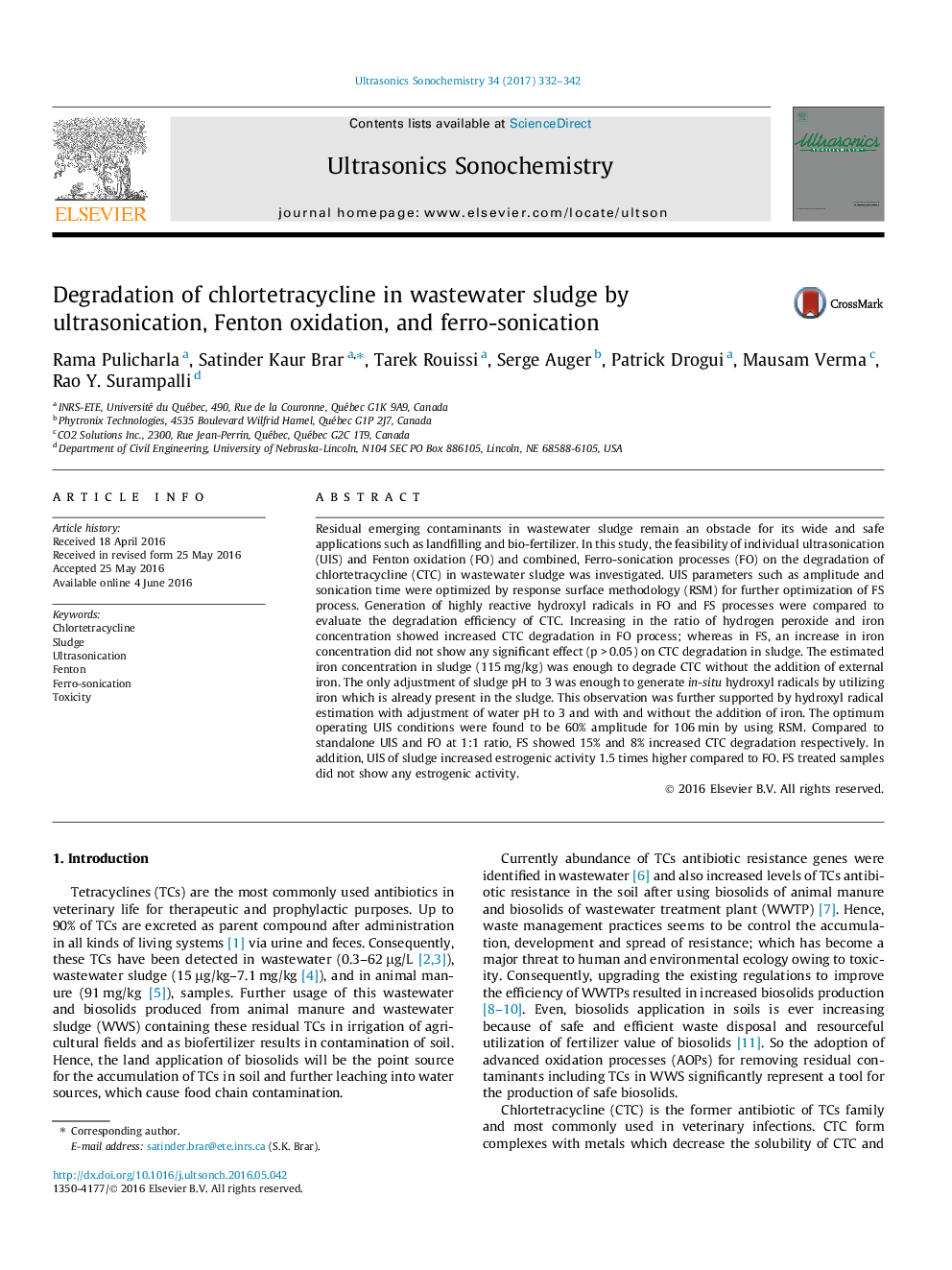| Article ID | Journal | Published Year | Pages | File Type |
|---|---|---|---|---|
| 7703687 | Ultrasonics Sonochemistry | 2017 | 11 Pages |
Abstract
Residual emerging contaminants in wastewater sludge remain an obstacle for its wide and safe applications such as landfilling and bio-fertilizer. In this study, the feasibility of individual ultrasonication (UlS) and Fenton oxidation (FO) and combined, Ferro-sonication processes (FO) on the degradation of chlortetracycline (CTC) in wastewater sludge was investigated. UlS parameters such as amplitude and sonication time were optimized by response surface methodology (RSM) for further optimization of FS process. Generation of highly reactive hydroxyl radicals in FO and FS processes were compared to evaluate the degradation efficiency of CTC. Increasing in the ratio of hydrogen peroxide and iron concentration showed increased CTC degradation in FO process; whereas in FS, an increase in iron concentration did not show any significant effect (p > 0.05) on CTC degradation in sludge. The estimated iron concentration in sludge (115 mg/kg) was enough to degrade CTC without the addition of external iron. The only adjustment of sludge pH to 3 was enough to generate in-situ hydroxyl radicals by utilizing iron which is already present in the sludge. This observation was further supported by hydroxyl radical estimation with adjustment of water pH to 3 and with and without the addition of iron. The optimum operating UlS conditions were found to be 60% amplitude for 106 min by using RSM. Compared to standalone UlS and FO at 1:1 ratio, FS showed 15% and 8% increased CTC degradation respectively. In addition, UlS of sludge increased estrogenic activity 1.5 times higher compared to FO. FS treated samples did not show any estrogenic activity.
Related Topics
Physical Sciences and Engineering
Chemistry
Chemistry (General)
Authors
Rama Pulicharla, Satinder Kaur Brar, Tarek Rouissi, Serge Auger, Patrick Drogui, Mausam Verma, Rao Y. Surampalli,
